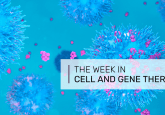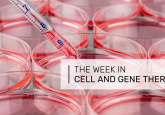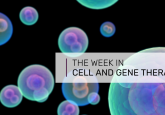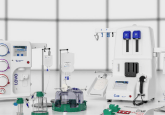Regulatory challenges and success in Series B: an interview with Jason C. Foster
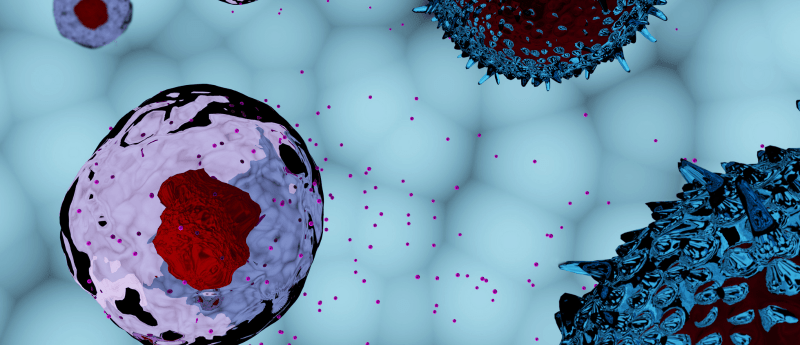
The transition of cell and gene therapy (CGT) from research discovery to clinical and commercial scale is a lengthy and challenging process. CGT has gained increasing investor interest in recent years, with goals to streamline the development, manufacturing and commercialization procedure to enable widespread patient access to cell therapies.
In this Q&A, we caught up with Jason C. Foster, CEO and Executive Director of Ori Biotech (London, UK) to discuss the company’s recent success in Series B funding, the challenges of streamlining the CGT process and Ori Biotech’s ambitions for the industry.
How long has fundraising been in the pipelines?
It was almost 7 months exactly – I’ve been lucky to be able to chat with over 100 investors in the US, UK and Europe who are really interested in what we’re doing and the problems we are trying to solve, which are important to everyone in the CGT field. Any of us who are in this to help patients can see the opportunity to enable more patients to gain access at lower cost and enhanced quality. I’m really excited about Novalis LifeSciences (NH, USA) who has previously taken companies from our stage through to commercialization, so that will be a huge value to us.
Are there any differences between investors in the US and the UK?
They do have a different perspective on the world. I think US investors are more growth-oriented and take more risk in hope of better returns. Historically, European and UK investors are a bit more conservative; they want to see more commercial clients with more traction. We were backed early on by Amadeus Capital Partners (London, UK) with early-stage seed funds and our Series A was led by Northpond Ventures (MA, USA) who are very active at the intersection of technology and biology. Bringing Novalis into the team as Series B funding adds to this value in our US network.
Over the last few months there have been many rounds of successful funding. Why do you think this is?
In 2020 the industry invested USD$20 Billion into CGT, which was 50% more than the prior year, and 2021 saw even more investor interest, which shows promise in the field. You also see more and more US investors moving outside of the US as the States’ venture market is quite competitive. People are trying to build teams in London and other places where they see value.
There seems to be a great deal of funding, yet we do not have many approved therapies yet. Why do you think this is?
Therapy development is very difficult and there are many criteria you must fulfil. The FDA and regulatory side are thinking about how they adapt their regulations to this new group of advanced therapies. This adaptation from the regulatory side will help us smooth through these challenges. It’s hard – what works at lab scale rarely works at larger scales – but part of the solution that we’re working on with Ori Biotech is giving academic researchers at discovery stage the effective tools they need to work efficiently and more cost-effectively. The Ori platform will allow successful discoveries to move seamlessly into clinical and commercial scales.
If we can standardize and make scalability seamless, it will benefit patients by advancing the industry to commercial scale.
Where do you think the inflection point will be where we target more common diseases – will this bring price down and increase acceptance of these therapies?
Inherently, there are small patient population sizes in rare diseases, making it far more controllable. With larger patient populations in common diseases, the problem of providing therapies to individuals will grow. This difficulty will only increase as the industry gets larger and more products are approved – we really need to figure out this puzzle.
How much does the disparity in healthcare systems and changing regulations influence the market you focus on?
One thing that kills a start-up company is lack of focus. We’re initially staying focused on the US because that’s where 90% of therapy developers are based – for us, it’s dependent on the location of therapy developers and where we can make the most clinical impact. It will be a huge milestone to trial and treat our first patients within the next 12 months. My goal is to shave costs and a couple years off the cell therapy development timeline – that time and money could then be reinvested into the patients.
Any other top tips for budding developers?
Absolutely. Thinking about commercial scale manufacturing when you’re at early stages in the lab is difficult as you have different incentives at that stage – the aim is always to get into the clinic. However, if you rush into the clinic, you often struggle further down the line. It’s important to consider whether your decisions at pre-clinical stage may have a negative knock-on effect at commercial scale. As an industry, I believe we need to improve our focus on the research stage, ensuring researchers have the effective tools to streamline efficiency.
Any last points?
This is a hugely exciting time for Ori: our mission is to enable widespread patient access to life saving cell and gene therapies. We’d love to talk to anyone in the research, therapy development and contract development manufacturer communities – we need to work together as an ecosystem to move the industry forward and achieve the bigger picture.
Disclaimer
The opinions expressed in this interview are those of the interviewee and do not necessarily reflect the views of RegMedNet or Future Science Group.
